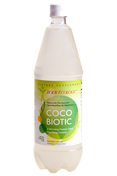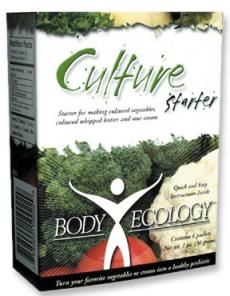Saving Our Soil: Why You Should Eat Organic
The soil is alive.
Mostly. Some bits of land have been farmed over and over again with the same crop and using the same batch of synthetic fertilizers and pesticides. This goes on and on until the soil reaches a point of depletion and harvest is poor; minerals have been leeched out, colonies of mutually beneficial bacteria destroyed, and the fungi that give ground its sponginess and prevent erosion are completely obliterated.
Simply tilling the soil disrupts what is called mycelium, an underground web of thread-like structures that give rise to mushrooms and, more importantly, provide an essential underground table of nourishment for plants to grow upon.
Organic farms have a far more diverse range of fungi living in the soil than conventional farms.
A recent study that looked at 9 farms in England found that organic farms have a greater range of fungi living in the soil than conventional farms. Of particular interest were arbuscular mycorrhizae, also known as AMF, in which the fungus penetrates the roots of plants. AMF help the plant to capture minerals and micronutrients from the soil. The mutually beneficial relationship between fungi and plants is by far the most common plant symbiosis known. (1)
Dr. Christopher van der Gast, at the Centre for Ecology and Hydrology (CEH), says that herbicides, pesticides, and constant tilling of the soil destroy the fungi on intensive farms. On the other end of the spectrum, organic farming preserves the mycelial layer and promotes a diverse range of in-soil microbes, which contribute to the health of the plant and the quality of the product grown. In short, organic farming methods are sustainable, useful long term, and provide a more nutritious harvest.
Dr. van der Gast tells us: “For most people it is about what you can see above ground. But the below ground biodiversity of the organisms are also key. It is a missing factor that most people do not think about.”

Our soil is alive and mimics the healthy inner ecosystem of the human body. Healthy and organic soil will ensure thriving plant life to protect your body from harmful toxins!
Imagine the planetary body that we call Earth. Then imagine the human body.
The ‘land’ of each is so similar to the other that centuries of medicine from many regions of the world, such as Ayurvedic and Chinese medicine, have used planetary systems to describe bodily functions. These medicinal practices are still in use today because they are effective.
Once the connection is made between the systems within the body and extended to the macrocosm outside the body, the principles of living soil sound incredibly similar to the principles practiced through the Body Ecology Diet.
A healthy inner ecosystem, which means an abundance of beneficial microorganisms:
- Assists the body in producing energy
- Is essential to maintaining proper defense mechanisms and balancing immune function
- Promotes detoxification
The same can be said about healthy soil.
Healthy, organic soil nourishes the plant life growing from it. It often protects plants from pathogenic invasion naturally. And healthy soil layered with fungal mycelium will detoxify land from heavy pesticides and metals that are harmful to humans and agricultural animals alike.
Some soil is so toxic that thousands of dollars are spent just to dispose of it, usually through incineration. Mycologist Paul Stamets tells us that:
“Mycoremediation [using mycelium to repair soil] works by first denaturing toxins…and second by absorbing heavy metals. Fertilizers, munitions, pesticides, herbicides, textile dyes, and estrogen-based pharmaceuticals are all susceptible to enzymes secreted by mushroom mycelia.” (2)
What happens when we spend a lifetime of eating processed, industry food that has minimal nutrient value, and we pop a pill at the slightest hint of malaise?
Look around. Diabetes, heart disease, cancer, obesity, and autoimmunity are the indications not of old age – but of systemic imbalance. All of these conditions are common. And many times, these disorders begin to manifest anywhere from 30 – 50 years of age. Within the last hundred years, the medical community has seen the advent and rise of conditions ranging from those linked with environmental toxicity to superbugs that are genetically built to outsmart any antibiotic.
The standard American diet, as well as an inner ecosystem that has been stripped of beneficial microorganisms, play a very important role in the health of our bodies and of future generations. After all, mom passes her microbes along to baby at birth, and studies have even shown that diet and environment influence gene expression. Likewise, farmland laden with synthetic fertilizer and pest control is bound to threaten the delicate ecosystem that has literally been in place since the creation of soil.
Improved crop production means greater food security.
Beyond health, there are economic reasons to preserve the fungal threads that hold farmland together. Dr. Gary Bending, from the University of Warwick, says that the findings could boost food security.
“The work provides us with new understanding, which we can use to promote these fungi in agricultural systems. This in turn could improve crop production. With the proportion of the earth’s surface, which is managed by humans increasing rapidly, this understanding is essential if we are to predict and manage microbial functioning in the environment to meet many of the major challenges faced by human society, such as food supply and the mitigation of climate change. Addressing these challenges, whilst maintaining environmentally sustainable agricultural practices, requires an understanding of microbial diversity.”
In the UK, research conducted through the Association for Organics Recycling found that the use of compost on farm fields has increased by 10% during the past year. This is good news, as compost promotes AMF and other varieties of mycelia to develop. In the survey, farmers claimed that the increase was due to the rising cost of synthetic fertilizer and the increasing quality of compost collected by local authorities.
WHAT TO REMEMBER MOST ABOUT THIS ARTICLE:
- Eat organic: Choosing organic means that you support sustainable farming methods and the preservation or restoration of the native ecology of a land. It also means that you understand that whatever is in the soil eventually ends up in your body.
- Include fermented food and probiotic beverages in your daily diet: The microbes in the Culture Starter and Kefir Starter are a welcome addition to your inner ecosystem. They promote overall balance, repair of the gut mucosal barrier, and detoxification. Celebrate inner biodiversity!
- Get involved: In addition to what you eat, you can contribute to sustaining living soil by introducing mycelium to your own garden or your neighborhood. More information and tools can be found on mycologist Paul Stamets’ website: www.fungi.com
PRODUCT RECOMMENDATIONS:
REFERENCES:
- Organic farms have better soil (thanks to microbes). Natural News. Dec. 08 2010. http://www.naturalnews.com/030654_organic_farms_soil_microbes.html
- Stamets, Paul. Mycelium Running: How Mushrooms Can Help Save the World. Ten Speed Press: Berkeley. 2005. P. 90.











